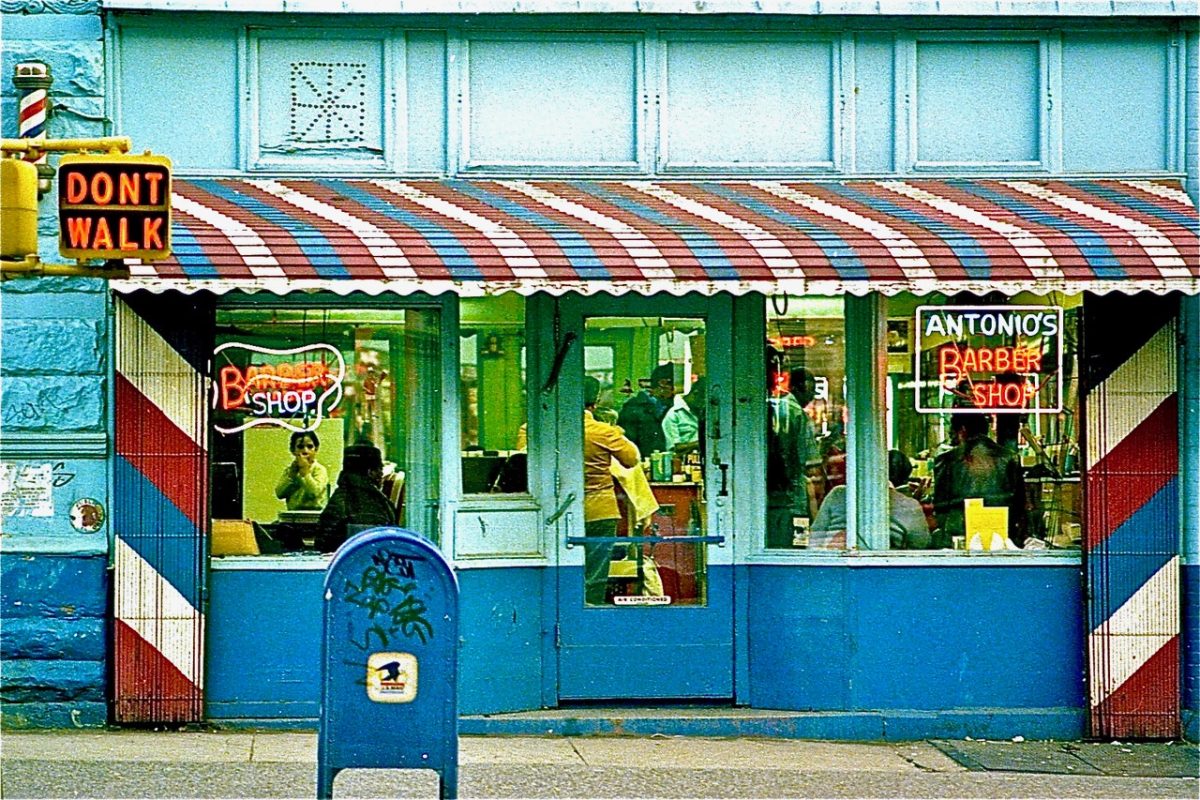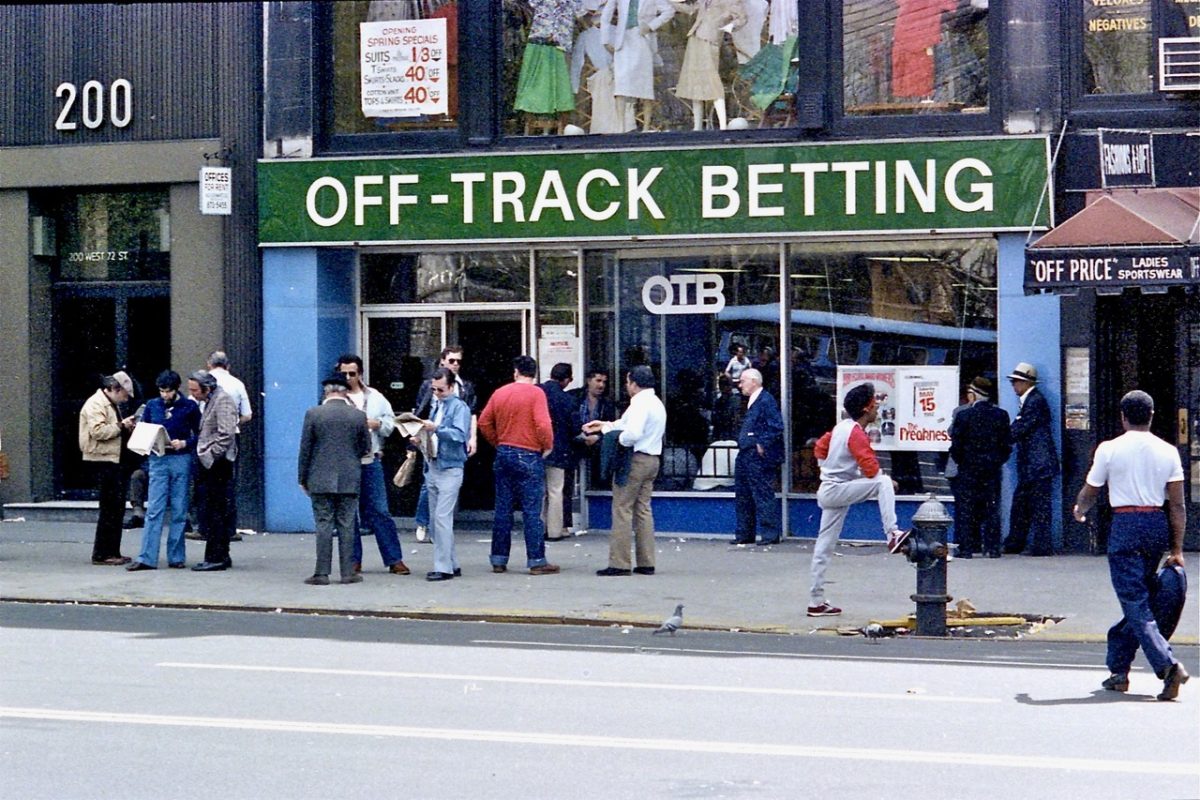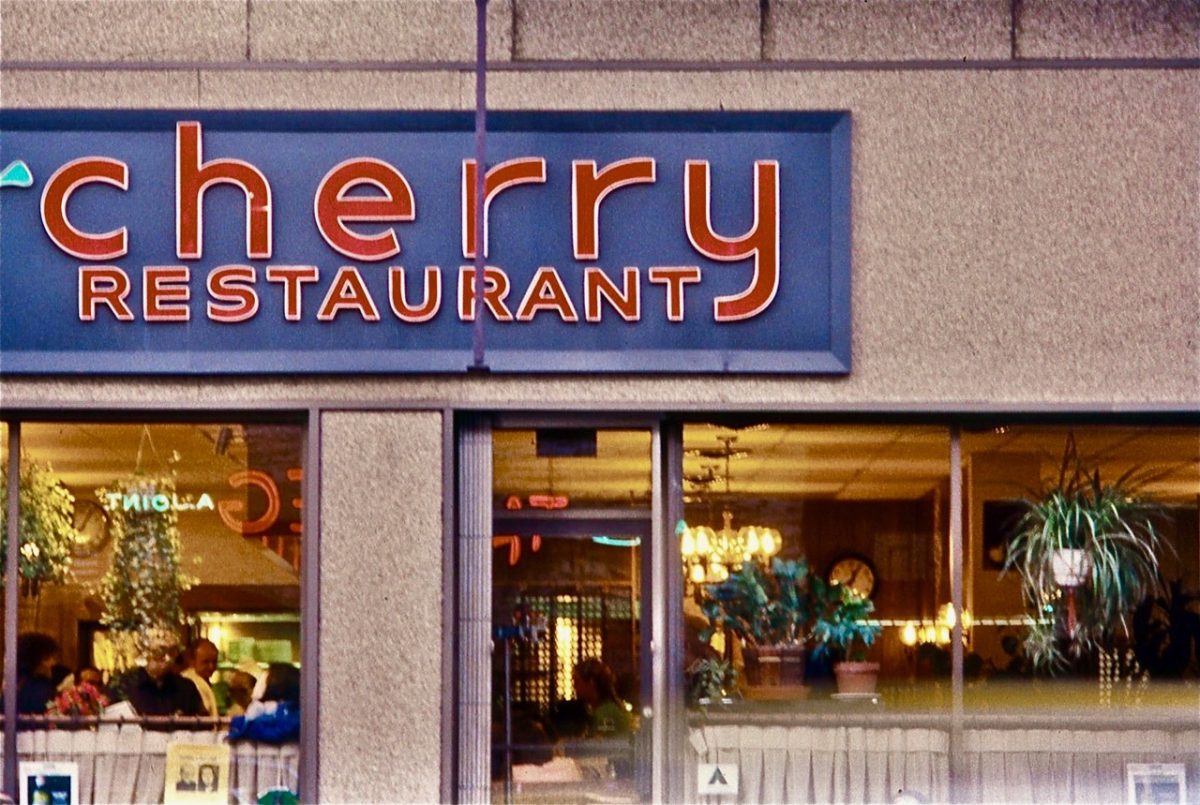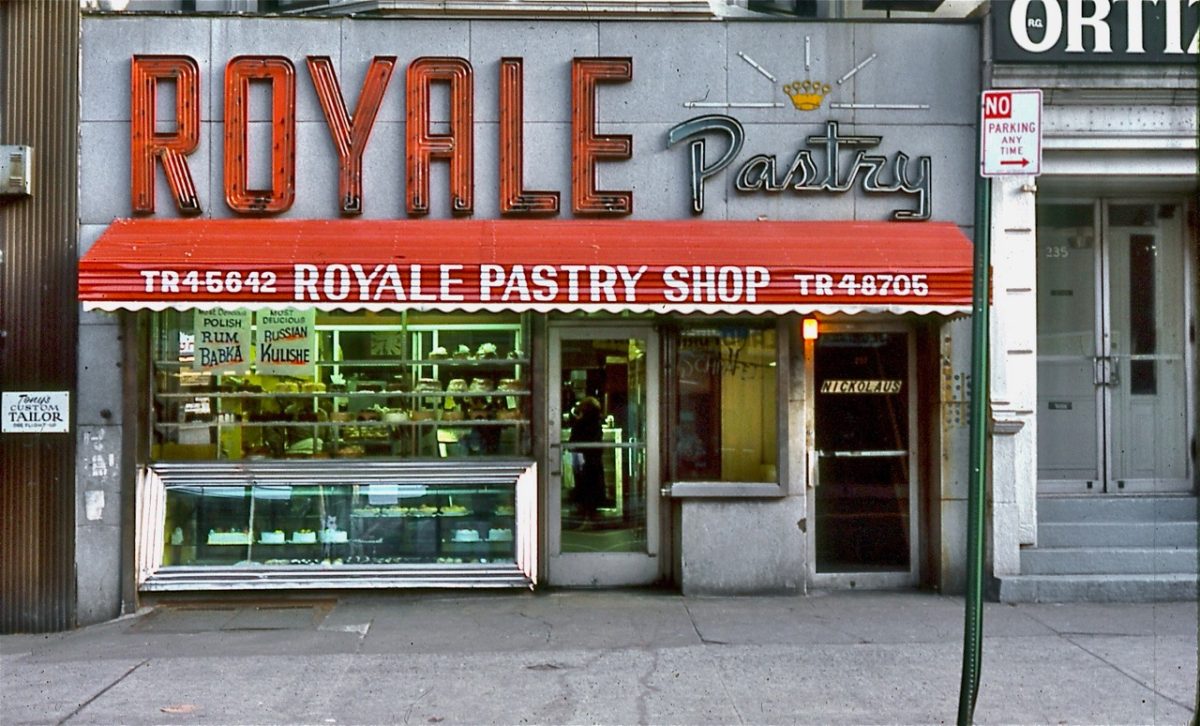“I moved to the Upper West Side in August, 1978, and immediately loved it with all my heart,” writes Stephen Harmon, a retired lawyer who first lived on New York City’s West End Avenue and 73rd street. “I am a photographer and set out to preserve it on film because I knew the look of the people and streetscape would change over time forever.”
Stephen’s love of photography began when in the 1960s he saw Walker Evan’s 1931 photograph of Saratoga Springs’ Main Street and said to himself, “Nothing will ever look like this again and thank God that guy took that photo and I’m going to be that guy who takes those photos.”
After this album of photos, we hear from Stephen in a great video from 2018.

Off-Track Betting was on 72nd St, just off Broadway. Upstairs was Off-Price Clothing. In the 1980s, you could eat at Mrs. J’s Sacred Cow (established 1947) and Cherry restaurant, and grab some cheese blintzes at the Royale Bakery on 72nd Street…
Stephen Harmon took hundreds of pictures of the Upper West Side in the 70s and 80s and thankfully he still has many of them. We’ll be posing more of his fantastic archive here.
His work is displayed in many of the city’s museums, including The Museum of the City of New York, The Brooklyn Museum, The New-York Historical Society, and The New York Public Library.


“When I was photographing the streets, the people, and the businesses in those bygone days, I was trying to capture on film and preserve forever, I hoped, the look, the feel, the very essence of the time and place. Nostalgia was not foremost on my mind; I was photographing the current day. Today, it seems the results are triggering happy memories and people are enjoying them, and I am very glad.”
– Stephen Harmon, via West Side Rag

“Before the advent of OTB, betting on a horserace was illegal, except for bets placed at the racetrack. Not everyone could get to a racetrack, so every neighborhood had a bookie, or several, who worked the illegal operation usually from a legal neighborhood business, such as a candy store, or a grocery, or a diner. Sometimes they used violence to collect on a wager.
“TB was started for two primary laudable purposes. First, to provide a government-authorized venue for placing non-racetrack bets on horse races, and, second, to raise revenue for NYS, which took a percentage of the wagering. Why OTB failed in NYC is too complicated for me to discuss… By the early to mid 1980s, OTB parlors were considered by many to be unsightly and unpleasant (many did not have toilets in order to dissuade customers from staying at the OTB for hours), and the clientele was considered by non-bettors to be unattractive, lazy or just unsavory. I, however, did not see it that way.”
– Stephen Harmon

“The streets of the Upper West Side that I walked in the late 1970s and 80s were a delight to behold, awash with color and character attributable in great measure to the people who lived by them.
There were shopkeepers who sold flowers and fruit in front of their stores. There were shoeshine men who set up buckets of flowers on the sidewalk. There were jewelry and hat sellers hawking their wares in different places and ways. There were hot dog carts, ice cream sellers, and other food vendors. And there were the sounds of the buskers, singing and playing instruments, all on the street. What a wonderful time to live!”
– Stephen Harmon, via Upper West Side Rag


Stephen Harmon: An Appreciation
Would you like to support Flashbak?
Please consider making a donation to our site. We don't want to rely on ads to bring you the best of visual culture. You can also support us by signing up to our Mailing List. And you can also follow us on Facebook, Instagram and Twitter. For great art and culture delivered to your door, visit our shop.








